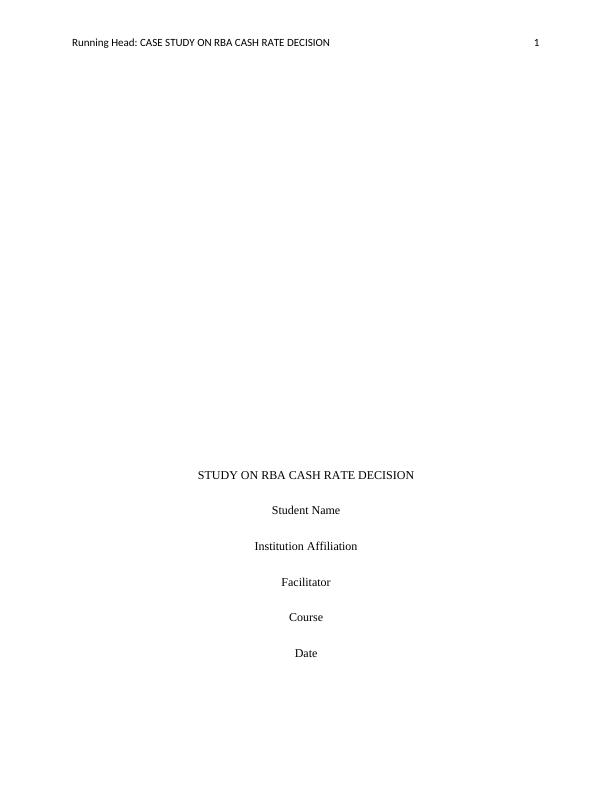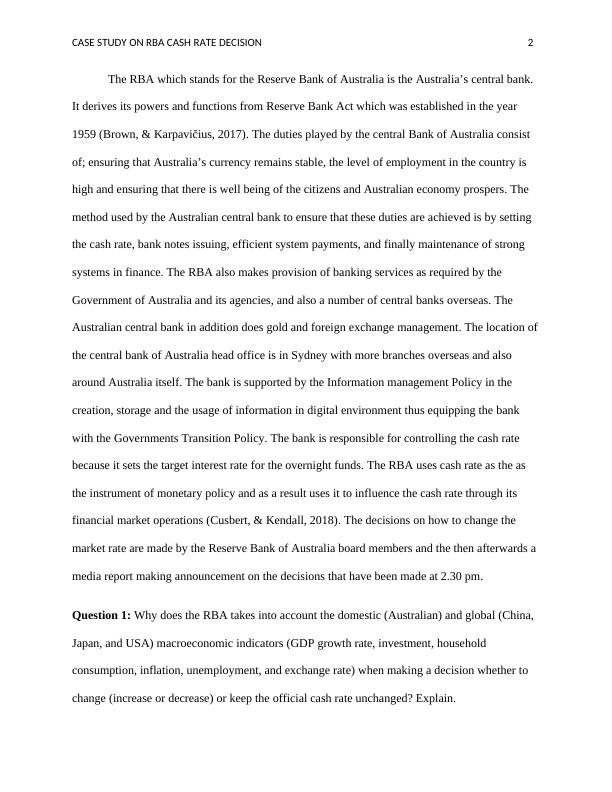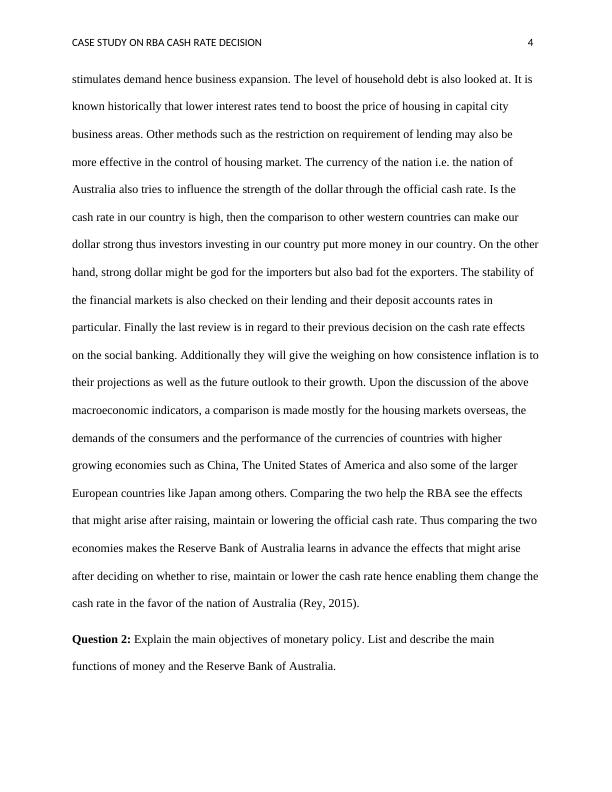Case Study on RBA Cash Rate Decision
Build a case study based on the RBA decision on 7th August 2018, using data and graphs to analyze the impact of GDP, unemployment, inflation, exchange rates, and interest rates.
15 Pages4179 Words474 Views
Added on 2023-06-04
About This Document
This case study discusses the Reserve Bank of Australia's cash rate decision, objectives of monetary policy, functions of money and RBA, and how an increase or decrease in cash rate affects household consumption, business investment, GDP, inflation, and housing market. It also explains why RBA compares domestic and global macroeconomic indicators and justifies RBA's decision to maintain the cash rate at 1.50 percent. The study uses the money market equilibrium model and monetary transmission mechanism to illustrate how an increase or decrease in cash rate affects the economy.
Case Study on RBA Cash Rate Decision
Build a case study based on the RBA decision on 7th August 2018, using data and graphs to analyze the impact of GDP, unemployment, inflation, exchange rates, and interest rates.
Added on 2023-06-04
ShareRelated Documents
End of preview
Want to access all the pages? Upload your documents or become a member.
Deflation Threat in Australian Economy: Role of RBA and Monetary Policy
|14
|2987
|241
Role of Reserve Bank of Australia in Determining and Implementing Monetary Policies
|14
|3474
|400
Case Study on Australia's Economic Condition
|19
|4464
|39
Monetary Policy and the Australian Economy: An Analysis of the Reserve Bank's Decision
|18
|3642
|349
Assignment on Macroeconomic Environment of Australia
|19
|3617
|26
Principles of Economics: Monetary Policy, Money Market, and Economic Relations of Australia
|22
|4249
|251




